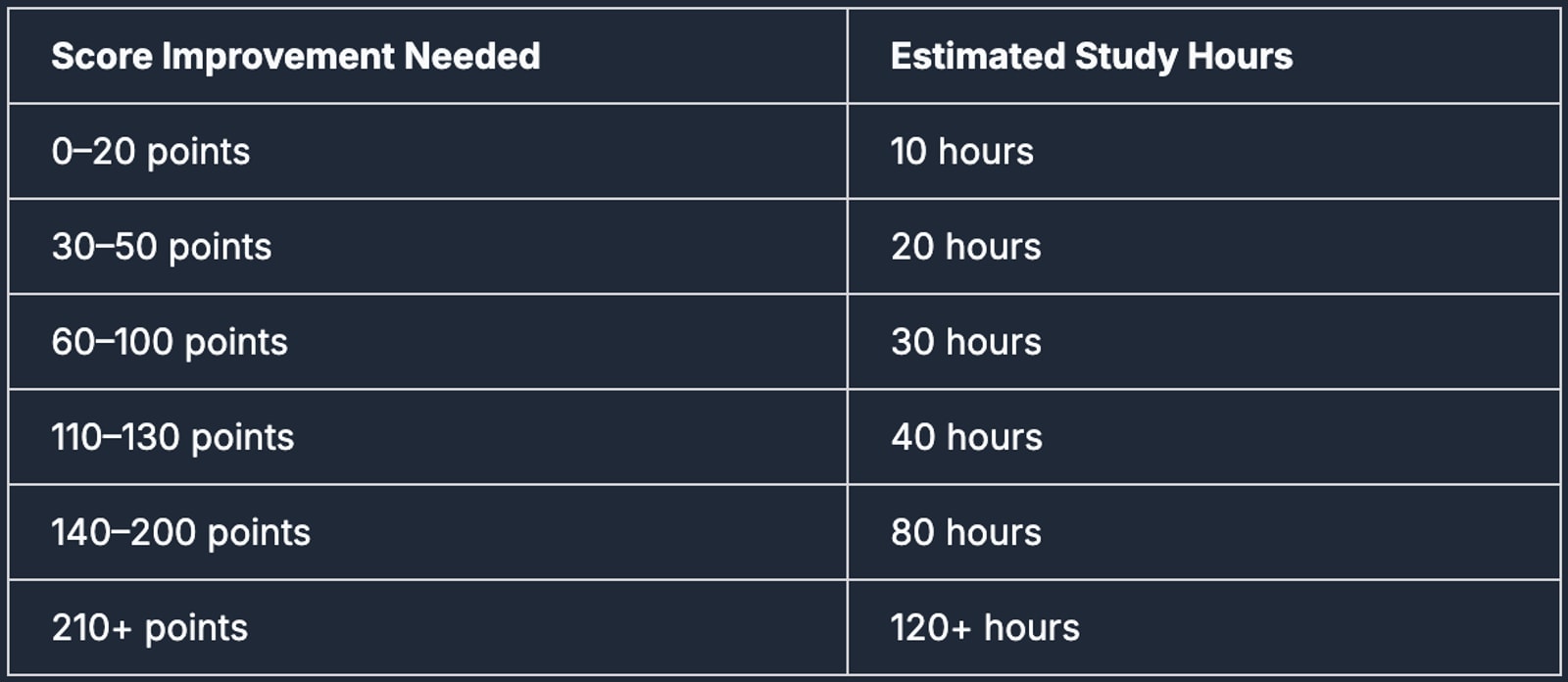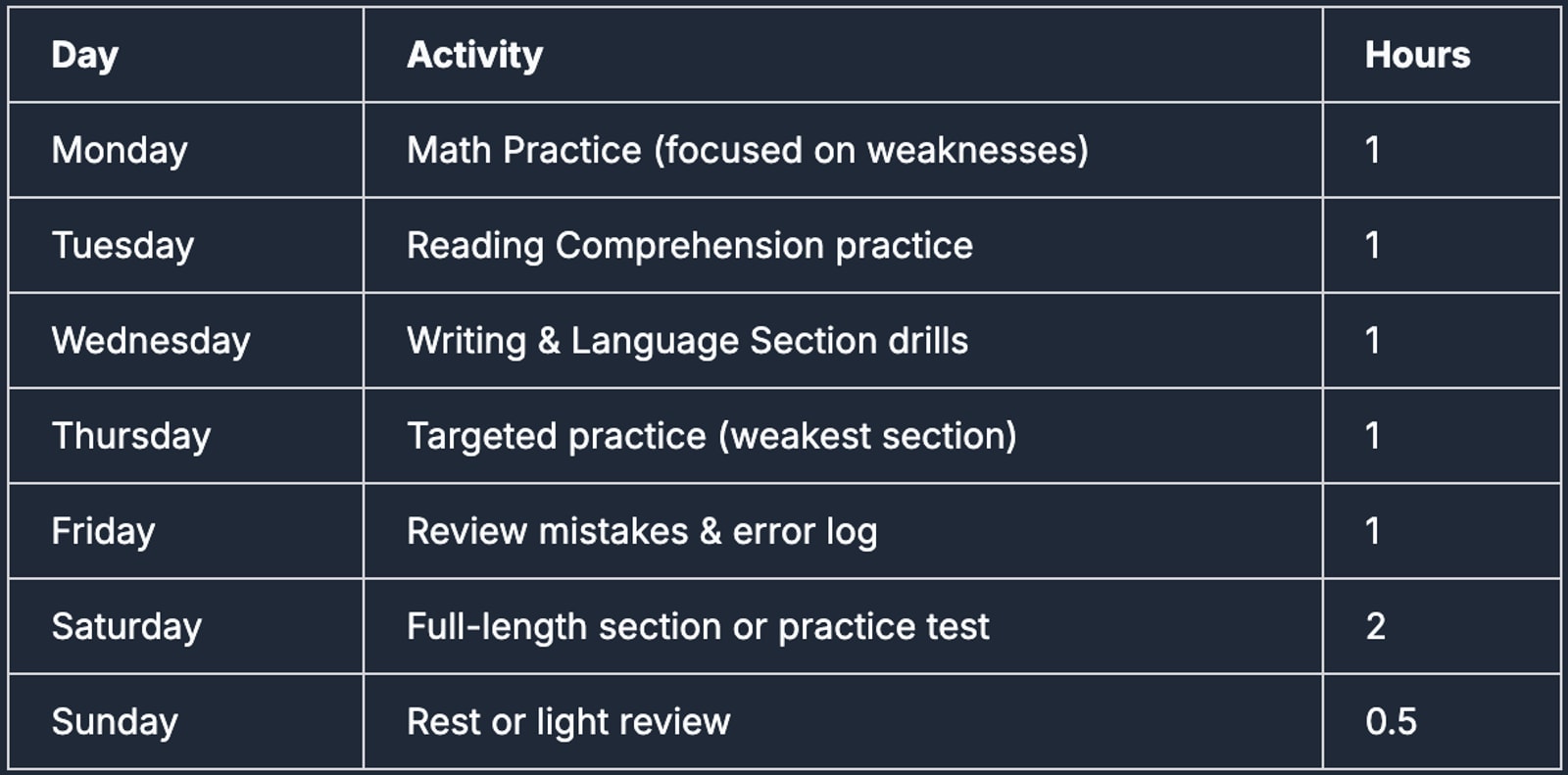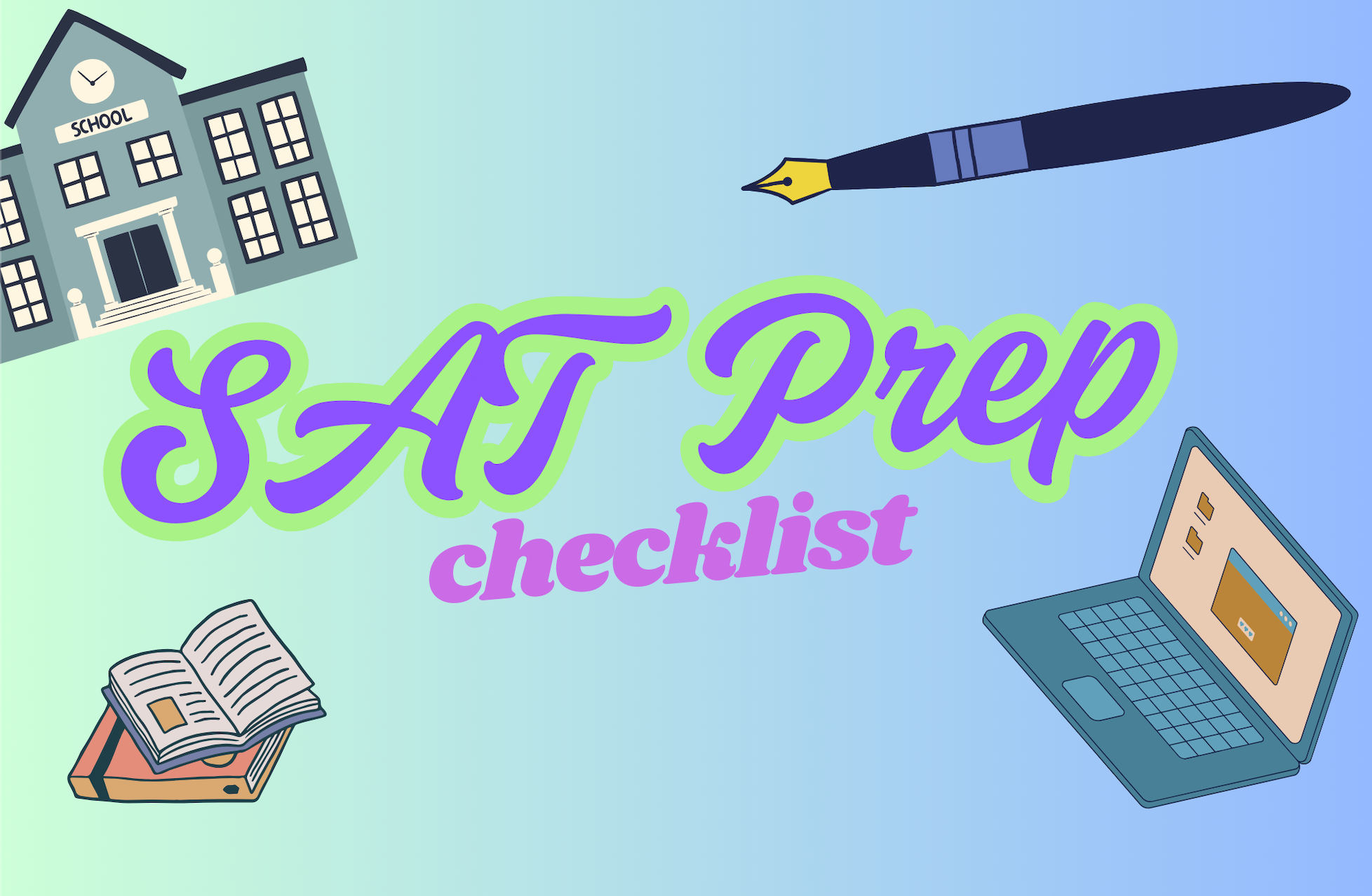How to Create a Study Schedule for the SAT: Make the Most of Your Summer Break
Author
Phoenix Wilder
Date Published

Summer break is here! After a busy school year, you finally have more time to relax—but if you’re planning to take the SAT in the coming months, this is also the perfect opportunity to prepare strategically and get ahead. With no other academic commitments, you can focus solely on building a strong SAT foundation. But how do you make the most of these weeks? The answer: create a smart and realistic SAT study schedule.
Step 1: Define Your SAT Target Score
Before you start studying, you need a clear goal. Your target score should not be “as high as possible”—it should be based on research about your dream colleges.
· Research your target schools. Use the admission websites to find the average SAT scores for accepted students. For example, top-tier schools like Harvard, MIT, and Yale often require scores above 1500. Well-known state universities usually look for scores in the 1300–1450 range.
· Aim for above average, not just the minimum. Setting your goal around the middle or higher end of admitted students’ score range will strengthen your odds.
Tip: Remember, scholarships often require a certain SAT score—sometimes even higher than what the school requires for admission. Check the scholarship requirements at your target universities.
Step 2: Take a Diagnostic SAT Practice Test
Now you need to figure out your starting point. This is essential—your entire study plan will be based on the gap between where you are and where you want to be.
· Take a full-length official SAT practice test. Use the College Board’s Bluebook app or Khan Academy’s free test.
· Don’t prepare in advance. This practice test is to measure your genuine current level, not to impress anyone or yourself!
· Record your scores for both Math and Reading & Writing sections.
By knowing your baseline, you can plan exactly how much effort you’ll need to reach your goal.
Step 3: Estimate How Many Hours You Need to Study
How big is the gap between your baseline and your target score? Here’s a rough guideline for how much study time is needed, based on how many points you want to improve:

Example: If your current score is 1200 and your goal is 1400, you’ll likely need to invest around 40 hours of focused SAT prep.
Step 4: Decide Your Weekly Commitment
One of the biggest advantages of summer is flexibility. Without the school workload, you can devote more consistent time every week to SAT prep.
· Be honest about your schedule. Consider family trips, camps, part-time jobs or other commitments.
· Aiming for 1–2 hours per day, for 5–6 days a week is realistic for most students—this adds up to 7–10 hours a week.
· Studying a bit every day is proven to be much more effective than cramming once a week.
Remember: Don’t set an unrealistic schedule—balance SAT prep with relaxation and leisure so you don’t burn out.
Step 5: Break It Down Into a Weekly Study Plan
A weekly structured plan prevents procrastination and makes it easy to track your progress. Here’s a sample summer SAT study week:

Total: approx. 7 hours
· Customize this plan to fit your personal strengths—if math is your weak spot, give it more days.
· Always review your mistakes. Keeping an error log helps you avoid making the same error twice.
· Once every two weeks, take a full-length practice test to measure progress and adjust your plan as needed.
Step 6: Use Tools to Stay Organized and Motivated
Sticking to a summer study schedule can be a challenge, especially with distractions. Here are some effective ways to stay accountable:
· Use a digital or physical calendar. Block off your SAT study times each week and treat them like important appointments.
· Set reminders and deadlines. Many study apps allow you to schedule tasks with alerts.
· Find a study buddy or accountability partner. You can motivate each other and share helpful resources.
· Reward yourself. Plan small treats or breaks after completing your weekly goal to make the process positive.
If organizing all this still feels overwhelming, try AI-powered study planning from platforms like Best SAT Score:
Choose your SAT test date (August, October, etc.).
Complete a brief skills/target survey.
Get your personalized week-by-week plan, with automatic reminders and calendar integration.
Step 7: Monitor Progress and Adjust
· After every two weeks, re-assess with a full practice test.
· If scores aren’t improving as expected, try new resources, adjust study methods, or increase your study hours.
· Stay flexible: your plan should change as you discover what works best for you.
Final Tips
· Start as early as possible. Don’t leave SAT prep to the last minute. Summer is a golden opportunity!
· Balance is key. Don’t overload your summer with only SAT—make time for friends, family, and relaxation.
· Stay consistent. Small, regular efforts beat one huge, last-minute cram session.
In Summary
A summer SAT study schedule allows you to focus deeply and prepare effectively, setting you up for success in the coming school year and test dates. Set a clear goal, find out where you stand, estimate your required hours, create a logical plan, and use the right tools to track your journey. Consistency and commitment will help you turn your summer break into your secret weapon for SAT success!
Good luck, and remember—the earlier you start, the more time you’ll have to reach your full potential!
Related Posts

Prepare for the Digital SAT Test with confidence! What to Know Before You Walk into the Testing Center. Read now!

Short on time? Discover actionable strategies and tailored tips to maximize your digital SAT prep—even with just days to spare!